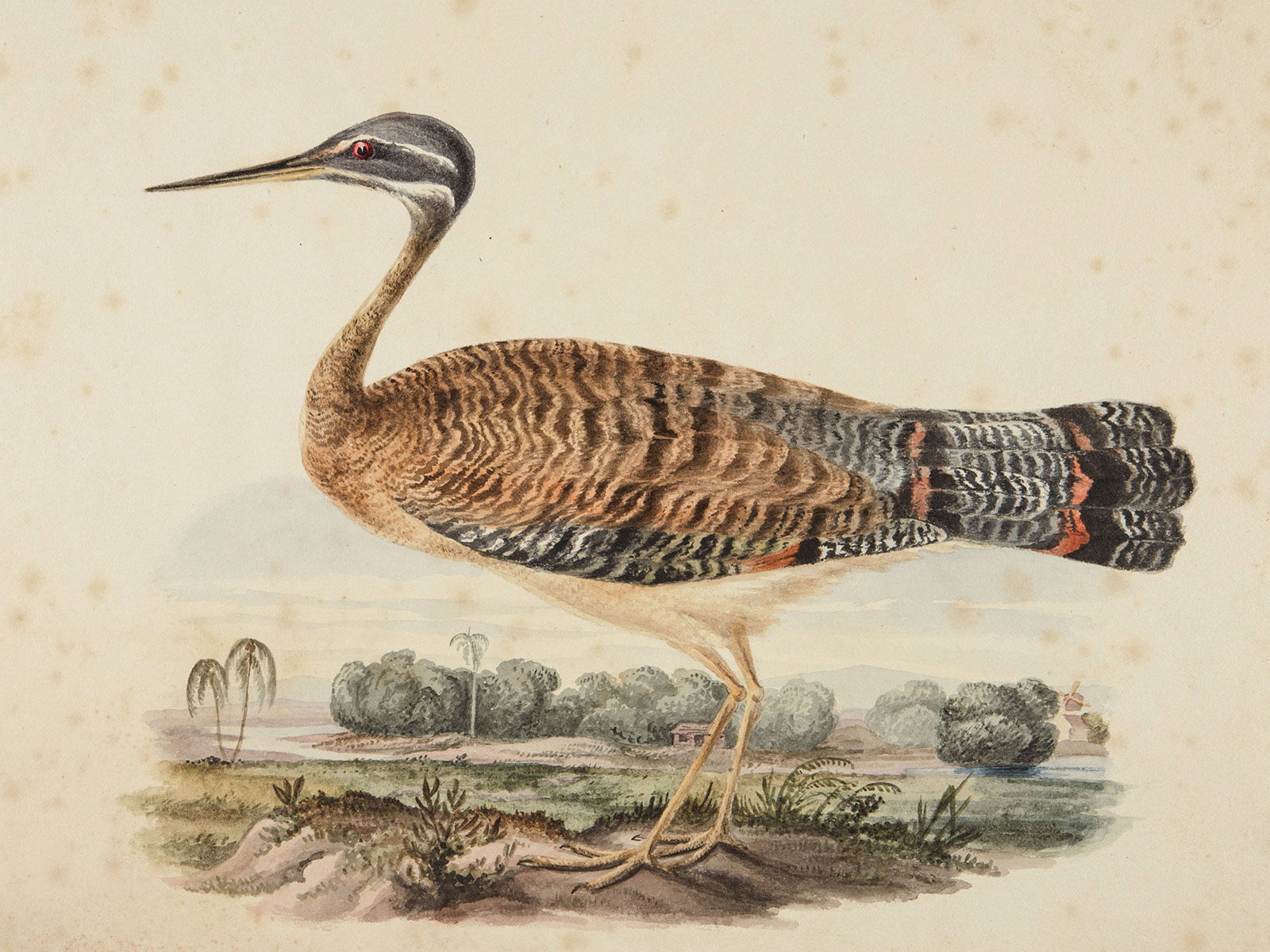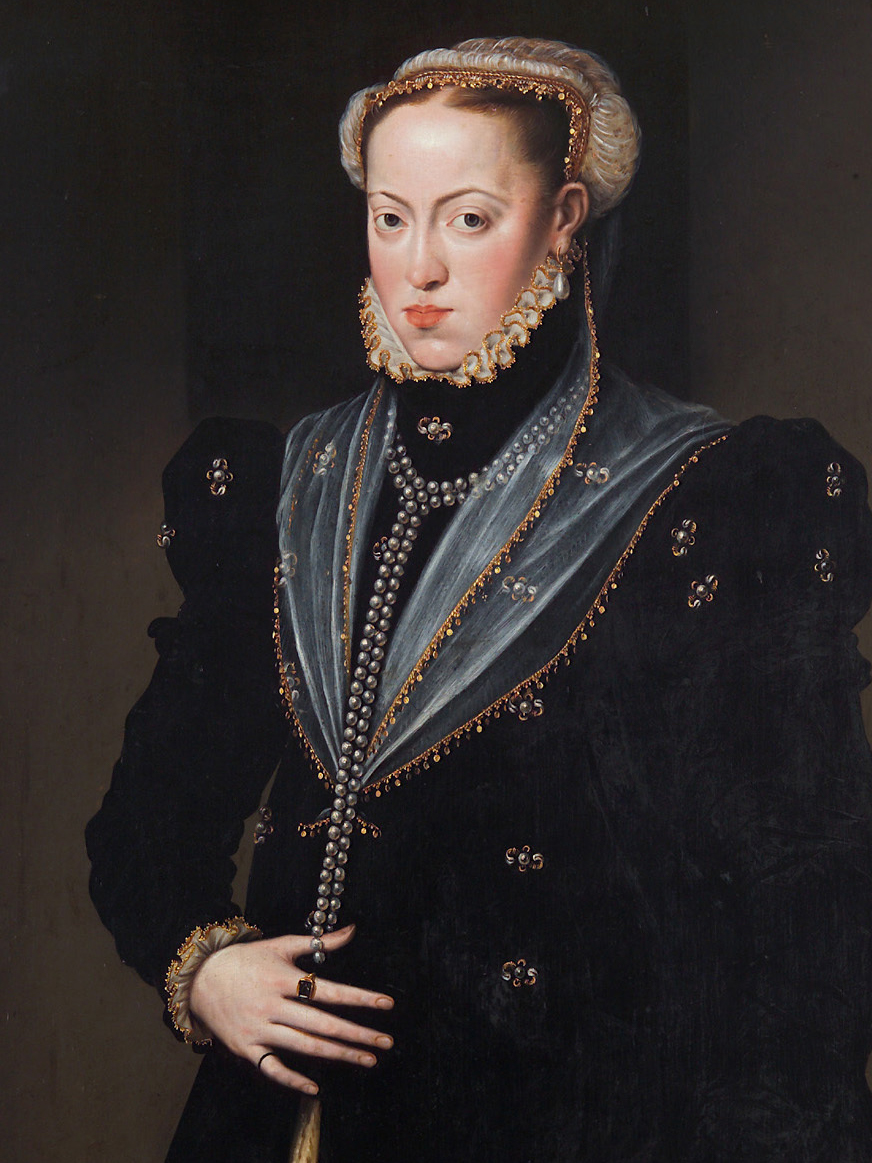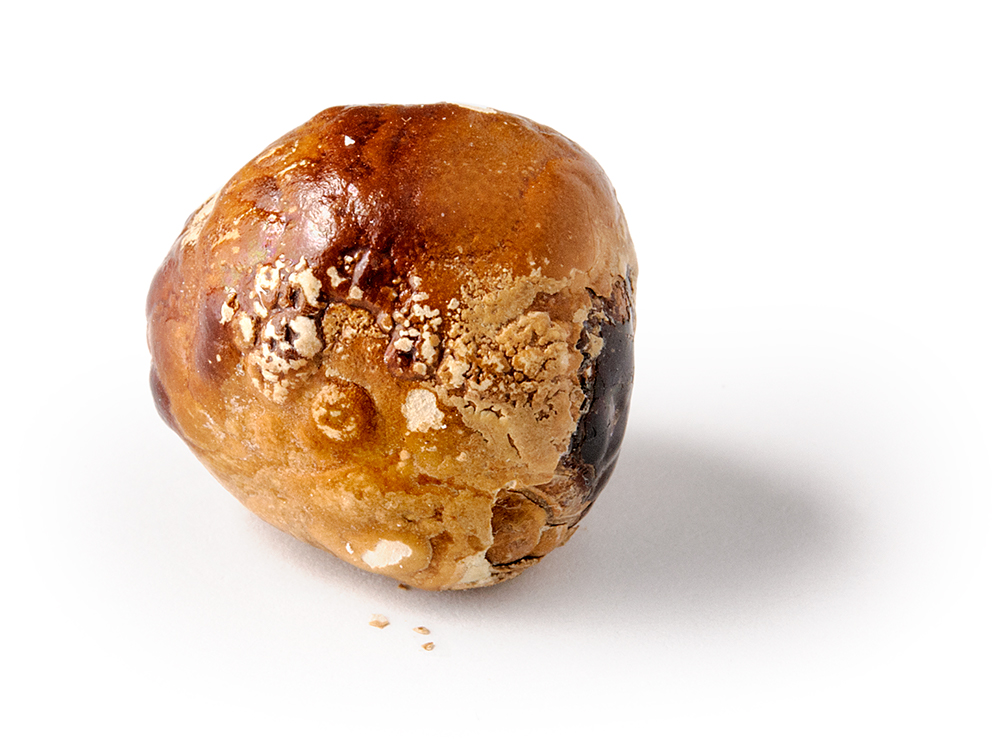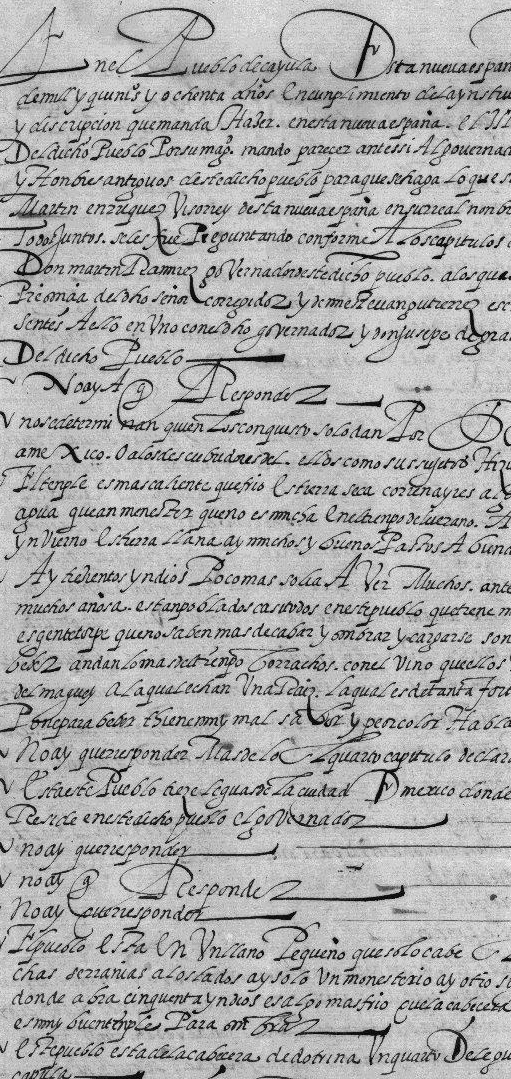 Students looked broadly at nature, diversity, and loss in the New World under Spanish colonial rule from the 1500s to 1800s, the early modern period. They conducted research in archives abroad and at Hamilton, created data visualizations, and presented their work on campus and internationally. They contributed to chapters, articles, bibliography, and footnotes to Cooley’s works that will be published in the coming years. And, with the help of Hamilton’s Levitt Center and Digital Humanities Initiative, they created new digital tools and databases that will be valuable resources to scholars everywhere.
Students looked broadly at nature, diversity, and loss in the New World under Spanish colonial rule from the 1500s to 1800s, the early modern period. They conducted research in archives abroad and at Hamilton, created data visualizations, and presented their work on campus and internationally. They contributed to chapters, articles, bibliography, and footnotes to Cooley’s works that will be published in the coming years. And, with the help of Hamilton’s Levitt Center and Digital Humanities Initiative, they created new digital tools and databases that will be valuable resources to scholars everywhere.
“What I like about digital humanities is that it really helps with the accessibility of your research; it makes it a lot more understandable when you can visualize something.”
At the center of it all was Cooley, who worked with students to devise and execute individual summer agendas and to help shape their research. Team members had the opportunity, Cooley says, to contribute to the creation of novel ideas that people in the academic world will be excited about. “On top of that I’ve tried to give them opportunities to present original research drawn from documents that people wouldn’t normally have access to, which will make it publishable research,” she says.
The Onion of Knowledge
In late 15th-century Europe, bezoar stones, coveted as the ultimate cure-all medicine, were trending. The wondrous bezoars were lumps of undigested material taken from the bellies of animals, and by the late 16th century, European colonists in the New World were slaughtering animals apace to harvest stones for the market back home.
Professor Cooley has studied the relationship between animals and medical knowledge. “The bezoar,” she writes in a chapter of a book she’s editing, “unites histories of animals, medicine, and Empire.”

Maps in the chapter about bezoars show the use and source of the stones over time. One tracks the movement of bezoars given as gifts for royal families. A table lists which type of bezoar cures which ills — for sore eyes, try a dove bezoar. Those data visualizations are the work of Kate Biedermann ’22, who is credited in the book. They are part of her summer work as a member of Cooley’s New World Nature research team.
Biedermann, an intended history and French major, received digital training as a class fellow of Hamilton’s Digital Humanities Institute, applying her new skills to Cooley’s work and her own research. “I work within the history of race and in the larger scope of things,” Biedermann explains. “For me that fits into the history of science and also the history of ideas, which are very closely interrelated.”
She reviewed more than 600 documents across multiple European languages to create the visualizations. Although the initial concept was Cooley’s, Biedermann has built out the research with her own ideas. “The more she learns about this data and how to create data sets and ask questions, the more original her research becomes,” Cooley says.
For evidence, there’s Biedermann’s “onion of knowledge,” also included in the chapter.

As she pored over the bezoar stone literature, Biedermann noticed that, over centuries, scholars repeatedly likened the stone to an onion. Struck by the recurrence, the student researcher created a visualization Cooley calls “an intellectual microhistory” in the shape of an onion, with each ring identifying a scholar who used the onion metaphor.
“Visualizing it this way was, first of all, fun,” Biedermann says. “But also analytically, you can see how knowledge is created and just recycled over and over and over again through different cultures, through different languages, through different time periods. I mean we’re starting in year 1000 with an Arab scholar, then we end with a British physician in 1809.”
The next step for Biedermann in her continuing collaboration with Cooley will be co-authoring articles, and she expects to continue to explore digital humanities, which she considers to be a rising new field.
“What I like about digital humanities is that it really helps with the accessibility of your research; it makes it a lot more understandable when you can visualize something,” Biedermann says.
Data Driven
Disappearing for the summer into a “Goldilocks zone of history,” Antton De Arbeloa ’21 emerged having helped create what may be the first database of a little-studied collection of 16th-century questionnaires rich in information about life in New Spain.
The database, which includes a searchable map, opens up the relatively inaccessible documents to analyses by Hamilton scholars and those around the globe. Professor Cooley, who headed the summer project, is using the database for her research, and so is history major De Arbeloa. In November they demonstrated the database at the Max Planck Institute for the History of Science in Berlin.
Colonial administrators responded to the surveys in the 1570s and 1580s by order of King Phillip II of Spain, who wanted information about the geography and culture of his new holdings in the Americas. His administrators set forth at a critical point, gathering information that could soon disappear — the “Goldilocks zone,” as De Arbeloa put it in a paper about his research. It was a time, he wrote, when “the last of the indigenous elders could shed light on life prior to European colonization, complete with descriptions of local flora, fauna, and history.”

Working in partnership with Hamilton’s Digital Humanities Initiative, and under Cooley’s guidance, De Arbeloa and student researcher Kayla Self ’21 painstakingly catalogued and analyzed the surveys, known as the Relaciones Geográficas. The student researchers drew on a 10-volume collection of the documents compiled in the 1980s by Mexican scholar René Acuña. Their project took roughly 10 months with De Arbeloa and Self, who both speak Spanish, doing much of the work over the summer.
They have taken the observations recorded in the surveys, Cooley says, “and made that into a structured dataset through which it’s possible to ask new questions and make new connections.”
When De Arbeloa wasn’t up to his eyebrows in questionnaires, he turned to his personal research. His interest is the loss of diversity — ecological, cultural, intellectual — stemming from the Spanish colonization of the Americas. With the necessary credential from Cooley, he went hunting in important archives in Seville and Madrid.
Finding and deciphering the handwritten documents was a slog, but an instructive one, and the work, as with his Relaciones project, was worth the long hours, frustration, and junk food intake. “I saw this summer as really an investment in my scholarship,” he says.
He’ll use the Relaciones database for his senior thesis. “What I’m really proud of, and what marked my summer, was completing this database because it’s been a project now a year in the making. Honestly I was so happy, the moment that made it all worth it, was when Professor Cooley showed me the preview of the website,” De Arbeloa says.

Worth a Thousand Words
Unexpected marvels helped her get through the dry spells as Elizabeth Atherton ’22, in the name of digital research, paged through hundreds of books that are part of Hamilton’s Beinecke Lesser Antilles Collection. It’s one of the world’s richest troves of documents about the region from the 16th to 19th centuries.
One prong of Atherton’s summer project was to find and catalogue every image of flora and fauna contained in roughly 1,000 books, mostly printed before 1850. The effort began last academic year with Alexa Zildjian ’19, and Atherton completed it, identifying more than 900 images in material that ranged from personal papers to calfskin-bound volumes.
Turning page after page after page, she sometimes made her way through nearly an entire shelf without encountering anything she could use. “That was a vaguely painful process,” says Atherton, an intended history major.
But here is one of the unexpected marvels: a personal sketchbook of paintings, dated from 1828, created by an art and nature lover with the initials N.J. The contents page, written in an elaborate hand, marked the names of some of the birds or where they were spotted: “In the woods bordering the River Demerara, March 1828.” Atherton was amazed to hold in her hands a book produced nearly 200 years ago, just for fun, that somehow ended up in Hamilton’s Special Collections.
Now those obscure images can be retrieved with a few keystrokes. Atherton was part of a team effort to digitize the Beinecke images for use in a VIKUS Viewer, a web-based tool that enables users to explore large databases of images.
“Having images of flora and fauna from printed books in the collection, searchable with a powerful tool like the VIKUS Viewer, will allow scholars to sort data in ways that should facilitate visual comparison of similar species,” says Christian Goodwillie, director and curator of Special Collections. Hamilton’s Burke Library and Digital Humanities Initiative were part of the project.
The second prong of Atherton’s research had a bit more glamour — she authored a lengthy appendix that will be published in a book by Professor Cooley. It’s a critical translation — the first translation done of the work — of a history written in the 1500s by Diego Muñoz Camargo about the Tlaxcalans, an indigenous people of Mexico. Atherton edited and polished Cooley’s manuscript.
“It was such a big document that my computer crashed sometimes when I tried to open it,” Atherton says. But it was fascinating, and she followed a thread that became her appendix. She wrote about Malintzin, a young, enslaved indigenous woman, who was a translator between Emperor Moctezuma of Mexico and the conquistador Hernán Cortés.
Getting published is the icing on the research experience for Atherton, who is thinking she may want to pursue a career in academia or as an archivist. “I discovered research isn’t as scary as I thought it was,” she says.
A Smoking Gun
What to write? Thomas Anderson ’20 was in search of a topic for a research paper for his class Race, Science, and the Origins of the Modern World with Professor Cooley. After some joint pondering, Cooley suggested that he turn to Hamilton’s unique Beinecke Lesser Antilles Collections to scout out colonial medical records, in French.
The materials date largely from the 16th to 19th centuries; the collection features 50 maps, plantation records, and oil paintings and watercolors. Walter Beinecke, Jr. donated the foundation of the collection to Hamilton, and the College has continued to add to it.
Anderson, a history and French major, was agreeable and came back with three promising prospects, one of which was an 1822 manuscript about the manchineel, considered to be the world’s most poisonous tree. The two soon recognized, with amazement, they’d come upon what Cooley called a smoking gun.
“What Thomas had found is an unstudied medical trial on a young slave,” she says. It’s rare to see a scientist’s motivations clearly articulated, Cooley explains, “especially when it is a deeply racist motivation that directly incentivizes their scientific project.”
The manuscript was the work of colonial physician Jean-Baptist Ricord of Guadeloupe in the Lesser Antilles. In it, Ricord tracked his experiments testing poisons from the manchineel on dogs, slaves (including a boy he called Jacob), and on himself.
Anderson found the manuscript last academic year, and Cooley hired him as a researcher so he could pursue it, continuing his work over the summer as part of her New World Nature team. Ricord was doing his studies, Anderson would later write, “during the last gasp of slavery in Guadeloupe.” Ricord saw the deadly tree as a weapon for slaves to use against their rulers, and therefore a weapon the colonizers needed to master for their own use.
“Is it not of the highest importance to understand these plants well enough, and better if possible, than the evil slaves who use them?” Ricord wrote. “Is there not a great advantage in knowing how to use the weapons of one’s enemy, and can we not fight him more ably, and even disarm him before he delivers a single fatal blow?”

As Anderson went deep into Ricord’s work, he decided to use modern science to better evaluate it. Cooley says the “history of science with science model,” which Cooley developed and Anderson ran with, has promising, broader application.
Ricord’s science was flawed even by the practices of the time, Anderson found. His memoir, “contains histories of pain, superstition, agnotology, dominance, and racism within its ostensibly scientific pages,” Anderson wrote.
Leaning heavily on environmental science and historical documents, Anderson created a digital map of likely locations of manchineel trees in Ricord’s time, a map that could direct researchers to more sources of documents and information. “That map will probably continue to evolve and feature into my work for my thesis and next year when I hopefully move on to my Fulbright grant,” says Anderson, who plans to apply for a prestigious Fulbright research award.
Anderson, Cooley says, has produced, “quite an amazing bit of original research.” Amazing enough to produce a chapter, co-written with Cooley, included in an edited volume.
Finding Academic Gold
Mindful of her professor’s advice to stay open to the unexpected, Kayla Self ’21 was in Puerto Rico developing a concept she’d devised — the Spanish use of the Caribbean as testing ground for imperialist policies and practices for use on mainland Americas.
Her academic radar and a random encounter in a museum led her to what may be the oldest European-style pharmacy in the New World, which has not been prominently written about in the literature on the history of medicine, says Professor Cooley. “Its drawers illuminate the medical practice at the confluence of the New World and Old,” Cooley would later write.
As a member of the New World Nature research team, Self spent the first part of her summer painstakingly helping to build a digital database of surveys about New Spain’s geography and culture. What she learned inspired her own field research for several weeks in the Dominican Republic and Puerto Rico. Self, a world politics major with a focus on Latin America, was the only non-history major on the team.
At Cooley’s suggestion, Self, who speaks Spanish, visited the Museo de las Casas Reales in Santo Domingo, Dominican Republic. As she worked her way through its many rooms, trying to decipher the organizational system, she came upon an exhibit that stopped her short. It was a freestanding wooden pharmacy cabinet, with rows of drawers, hand painted with landscapes. The drawers once contained medicinal plants, and the landscapes presumably represented the locations where they were obtained.
On alert for a find, Self knew the cabinet was gold and fired off a photo, the first of many, to Cooley, who is interested in what the cabinet’s imagery may reveal about the New World’s system of creating scientific knowledge. She’s also interested in the potential for DNA identification of materials in the drawers.
Finding the cabinet was an aside to Self’s own research. As she learned more about the Spanish approach to the Caribbean, she focused on the original inhabitants of the islands. “I found myself thinking about how rebellion, protest, and resistance shaped these islands in past and present,” she wrote in a report about her work. “These themes of how people pushed back against colonial power intent on extracting resources from them emerged everywhere I went, whether studying the past or navigating the present.”
Self, whose mother is from Puerto Rico, was doing research there in July during widespread protests against the governor, who would soon resign. The home where she stayed gave her easy access to protesting crowds, and being there was a pivotal moment in her life. Self views the governor’s ouster as a blow for democracy in the context of the island’s long history of colonialism.
“I’ve always wanted to do social justice advocacy work and Puerto Rico is my main love and passion, so that’s definitely something that is going to drive me in the future,” she says.
Posted July 3, 2020

